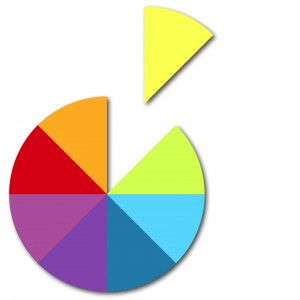Choose TODAY to do yourself a big fat favor.
It could be the biggest favor you have ever done for yourself.
What would you like to accomplish in the coming year?
What would make you feel really satisfied?
If you accomplished this, how would it make you feel?
Name three ways it would make you feel.
Why? Because we only want something because of how we imagine it will make us feel.
It’s not the “something” that we want so much as the feelings that we associate with having it.
People fail to achieve their goals not because they are lazy or inept but because they have not mastered the skill of properly defining their goals.
People fail because they make half-hearted fuzzy resolutions devoid of a productive structure.
Now let’s put your annual aspiration to the test.
Is it SMART? Find out.
Step 1. Ask yourself these questions.
Is it Specific? “I want to make money with my art” is not specific. “I will earn over $100,000 from the sale of my art of 2015.” That is specific.
Is it Measurable? You either earned over $100,000 from the sale of your art or your did not. THAT is measurable.
Is it Actionable? Meaning can I move on it today? If you have not sold any or much of your art this is probably not a SMART goal.
Will it produce the Result I want? Is this want you really really want? Ask yourself why.
Is it Time bound? Are you giving yourself a clear finish date?
If your SMART goal does not meet this criteria above then just make it SMARTER.
Evaluate and Revise.
Your SMARTER goal should both excite and scare you a little.
If you believe your goal is too big, and you don’t really believe that you can accomplish it, then you need to dial down your ambition.
Pro tip. Don’t share your goal with those who do not support you. Surround yourself with people who will encourage you. Fire the nay-sayers.
Step 2. Break it down.
The next step is to break your big annual goal down into monthly chunks or milestones.
Work backwards and then put the milestones in sequential order.
In the example below I start in December by imagining hosting a holiday party where I thank all of my patrons and partners for helping me accomplish my SMARTER goal.
Notice. I’m starting with the feeling of gratitude and working backwards.
Engage your most valuable asset, your imagination.
Just imagine how things could unfold.
As you move towards your destination, your goal, your road map will evolve. It will come into focus.
Your job is to keep your compass pointed towards your destination and to keep it moving one step at a time.
Remember. “The man at the top of the mountain did not fall there.” Vince Lombardi
Here’s an example of monthly milestones.
December
Host a patron gratitude party.
November
Review and revise ecommerce site.
October
Review and revise FAN Plan.
September
Review and revise Making MONEY Plan.
August
Implement social media strategy.
July
Begin hosting monthly studio events.
June
Secure agreements with three or more strategic partners.
May
Launch new ecommerce site.
April
Complete new prototypes.
March
Complete all of The MAKING Art Making MONEY Course assignments.
February
Complete all of The MAKING Art Making MONEY Course assignments.
January
Enroll in The MAKING Art Making MONEY Course that is re launching around the end of January, I couldn’t resist ![]() This IS what I would actually do if it had been available to me.
This IS what I would actually do if it had been available to me.
There you have it. Choose your SMARTER goal and write it down NOW.
Imagine how you accomplished it, backwards. How did it feel along the way?
You may not always feel confident but you can have confidence that this process works, if you do it.
It’s worked for me and it is working for the artists who I mentor.
Create the life that you want to live.
None of us are getting out of here alive so you might as well create your best year ever.
“Whatever the mind can conceive and believe, it can achieve.” Napoleon Hill
One final note. You are not always going to “believe.”
The good news is that it is a myth that you have always believe. I don’t always believe.
Ups and downs are part of the journey.
All you have to do is take consistent daily action and you WILL get there.
This is the actual plan I used to accomplish my SMARTER goal in 2005 to sell over $100,000 of my art during my first year as a full-time artist in San Francisco where I knew no one.
Be SMARTER than ever before and make it your best year ever!








